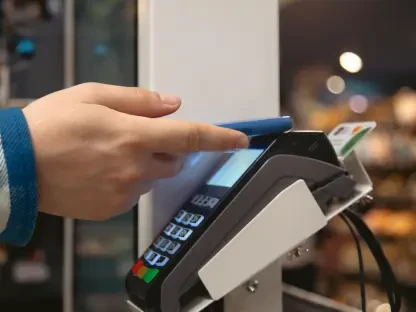Setting the Stage for a Loyalty Crisis
In today’s fast-paced and hyper-connected business landscape, customer loyalty stands as a cornerstone of sustainable growth, yet a staggering disconnect threatens to unravel corporate strategies across industries. A recent survey by a leading global consultancy reveals that 89% of executives believe customer loyalty has strengthened, while only 39% of consumers agree, exposing a 50-point perception gap that could jeopardize market positions. This alarming statistic signals a critical blind spot for business leaders who may be misjudging the very foundation of their customer relationships. As digital ecosystems and consumer expectations evolve rapidly, understanding and addressing this divide becomes not just a priority but a necessity for survival in a competitive market.
The implications of this gap extend far beyond mere numbers, pointing to a fundamental misalignment in how loyalty is perceived and cultivated. With over half of consumers ready to abandon a brand after just one negative experience, the stakes have never been higher. This report delves into the nuances of this perception divide, exploring the differing definitions of loyalty, the shortcomings of current programs, and the urgent need for adaptation in a digital age.
Unveiling the Loyalty Perception Gap
The stark contrast between executive optimism and consumer sentiment forms the crux of this industry challenge. While a significant majority of business leaders express confidence in growing loyalty, the reality among customers paints a far less rosy picture. This 50-point disparity highlights a profound misunderstanding that could lead to misplaced investments and strategic missteps, leaving companies vulnerable to customer churn.
Beyond the numbers, this gap reflects a deeper issue of miscommunication and misaligned priorities. Executives may celebrate apparent successes without realizing that consumers operate on a different wavelength when it comes to brand allegiance. Addressing this divide requires a thorough examination of how loyalty is defined and perceived by each group, setting the stage for a more aligned approach to customer engagement.
Defining Loyalty: Executives vs. Consumers
Executives’ Focus on Measurable Metrics
For many business leaders, loyalty is a numbers game, quantified through concrete actions such as repeat purchases, subscription renewals, and transaction frequency. These tangible indicators often serve as the primary gauge of customer engagement, leading executives to assume a strong market position when such metrics trend upward. This data-driven mindset, while logical, can create a false sense of security if not balanced with qualitative insights.
However, an over-reliance on these measurable behaviors risks overlooking the subtler, less quantifiable aspects of loyalty. When leaders focus solely on transactional data, they may miss warning signs of dissatisfaction or disengagement, leading to an inflated view of their brand’s standing. This narrow perspective can result in strategic decisions that fail to address underlying issues, ultimately weakening customer retention.
Consumers’ Emotional Perspective
In contrast, consumers anchor their sense of loyalty in emotional and experiential factors rather than cold, hard data. Early interactions with a brand, the feeling of being valued, and the inclination to recommend a company to others often shape their allegiance more than purchase frequency. This emotional bond forms the bedrock of true loyalty, distinguishing it from mere habit or convenience.
The fragility of this connection cannot be overstated, as more than half of surveyed consumers indicate they would walk away from a brand after a single negative encounter. This readiness to switch underscores the importance of consistent, positive experiences that resonate on a personal level. Companies ignoring this emotional dimension risk losing customers who feel unheard or unappreciated, no matter how often they transact.
Shortcomings of Current Loyalty Programs
A critical flaw in many corporate strategies lies in the design and execution of loyalty programs, with three out of five executives admitting these initiatives fall short of expectations. Often built around internal tracking capabilities and cost-driven incentives like discounts or rebates, such programs frequently fail to resonate with what customers truly value. This disconnect reveals a missed opportunity to foster deeper connections.
Consumers, on the other hand, crave rewards that go beyond monetary benefits, seeking exclusive access, a sense of community, and tailored experiences that reflect their unique preferences. When loyalty programs prioritize corporate convenience over customer desires, they not only underperform but also alienate the very audience they aim to retain. This mismatch demands a reevaluation of how rewards are structured and delivered.
Moreover, the rapid pace of change in customer expectations adds another layer of complexity. With nearly half of executives predicting their current loyalty frameworks will become obsolete within the next three years, from 2025 onward, the urgency to innovate is clear. Adapting to these shifting dynamics is essential to avoid being left behind in an increasingly discerning market.
Evolving Consumer Behaviors and Digital Challenges
The landscape of customer loyalty is undergoing a seismic shift, driven by changing behaviors and the pervasive influence of digital platforms. Consumers today are less tethered to traditional brand interactions, instead relying on external sources such as social media influencers, online reviews, and AI-powered search tools for decision-making. These factors, often beyond a company’s direct control, are reshaping how loyalty is formed and sustained.
This trend poses a significant challenge for businesses accustomed to managing customer engagement through proprietary channels. As nearly half of surveyed executives acknowledge the looming obsolescence of their loyalty programs within a short timeframe, the need to pivot becomes undeniable. Companies must recognize that loyalty is no longer confined to direct transactions but is influenced by a broader, less predictable digital ecosystem.
The rise of these external touchpoints requires a rethinking of how brands position themselves in customers’ daily lives. Simply maintaining a presence on company-owned platforms is insufficient when consumers are engaging elsewhere. Adapting to this reality means finding ways to integrate into the spaces where customers naturally spend their time, ensuring relevance in a fragmented digital world.
Future of Loyalty: Adapting to a Digital Ecosystem
To remain competitive, loyalty programs must evolve beyond standalone offerings and embed themselves into the wider digital environments where consumers already interact. As noted by industry experts, the future lies in meeting customers on their terms, within platforms and communities that shape their preferences and behaviors. This shift toward integration represents a departure from rigid, company-centric models.
Emerging strategies focus on the power of early customer experiences as a foundation for lasting allegiance. Personalized engagement, tailored to individual needs and preferences, also plays a pivotal role in creating meaningful connections that endure. By prioritizing these elements, companies can cultivate a sense of loyalty that transcends transactional interactions and fosters genuine advocacy.
Furthermore, embracing technology to deliver seamless, relevant experiences across digital touchpoints is becoming a hallmark of successful loyalty initiatives. Whether through data-driven personalization or partnerships with influential digital platforms, the goal is to create a cohesive presence that aligns with modern consumer habits. This forward-thinking approach positions brands to thrive amid rapid technological and behavioral changes.
Closing the Gap: Strategic Recommendations and Outlook
Reflecting on the insights gathered, it is evident that the chasm between executive perceptions and consumer realities poses a substantial threat to business sustainability. The disconnect, marked by differing definitions of loyalty and ineffective programs, leaves many companies at risk of customer loss and diminished relevance in a crowded market. This gap underscores a pressing need for alignment in understanding and strategy.
Looking ahead, the path forward calls for actionable steps to bridge this divide, starting with a redefinition of loyalty that incorporates emotional and experiential dimensions alongside traditional metrics. Businesses are urged to move beyond discount-driven programs, instead investing in exclusive access, community-building, and personalized interactions that mirror consumer desires. Integrating into broader digital ecosystems also emerges as a key tactic to maintain visibility and influence in spaces where customers naturally engage.
As a final consideration, the journey ahead demands continuous adaptation to evolving expectations, leveraging technology to anticipate and meet customer needs in real time. Companies that embrace this mindset—prioritizing early impressions and meaningful engagement—are better equipped to secure loyalty in an unpredictable landscape. The lessons from this analysis point to a future where understanding and responsiveness are the true currencies of customer allegiance.









